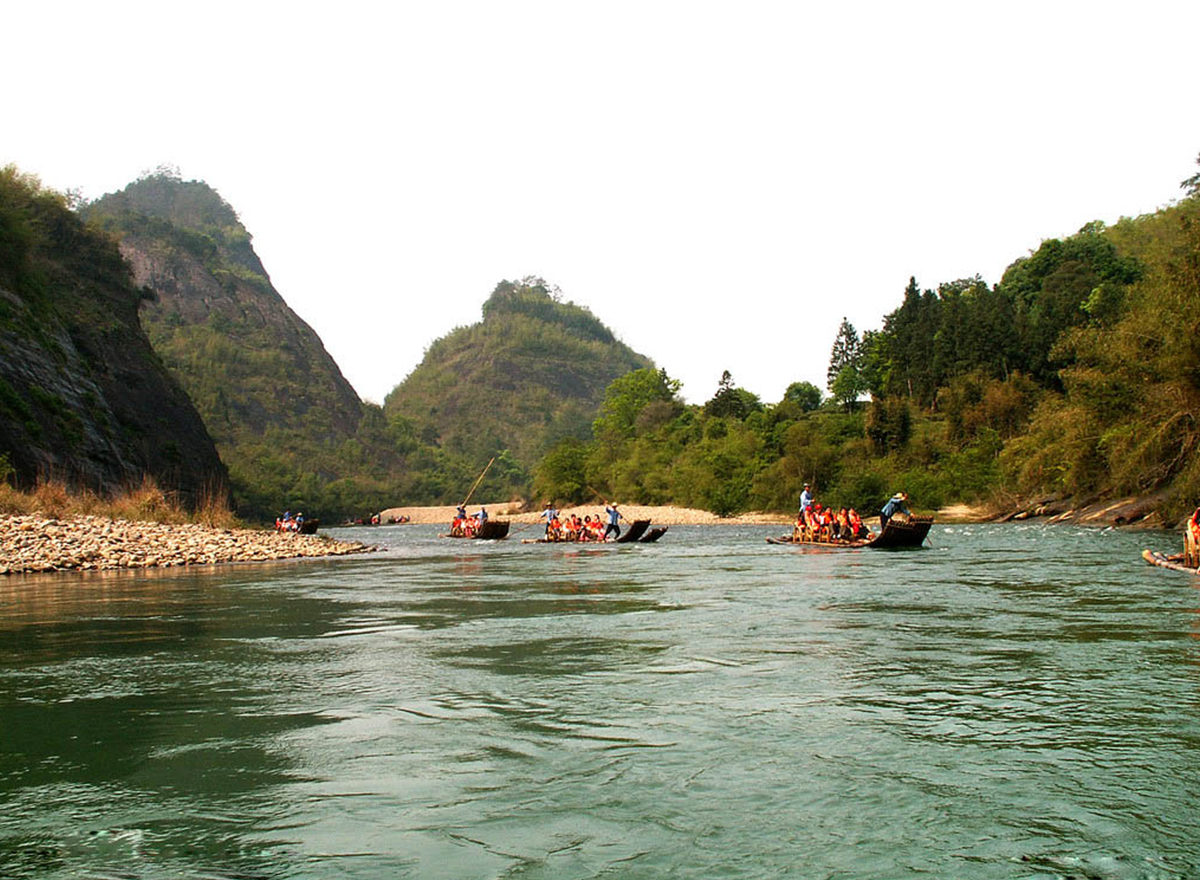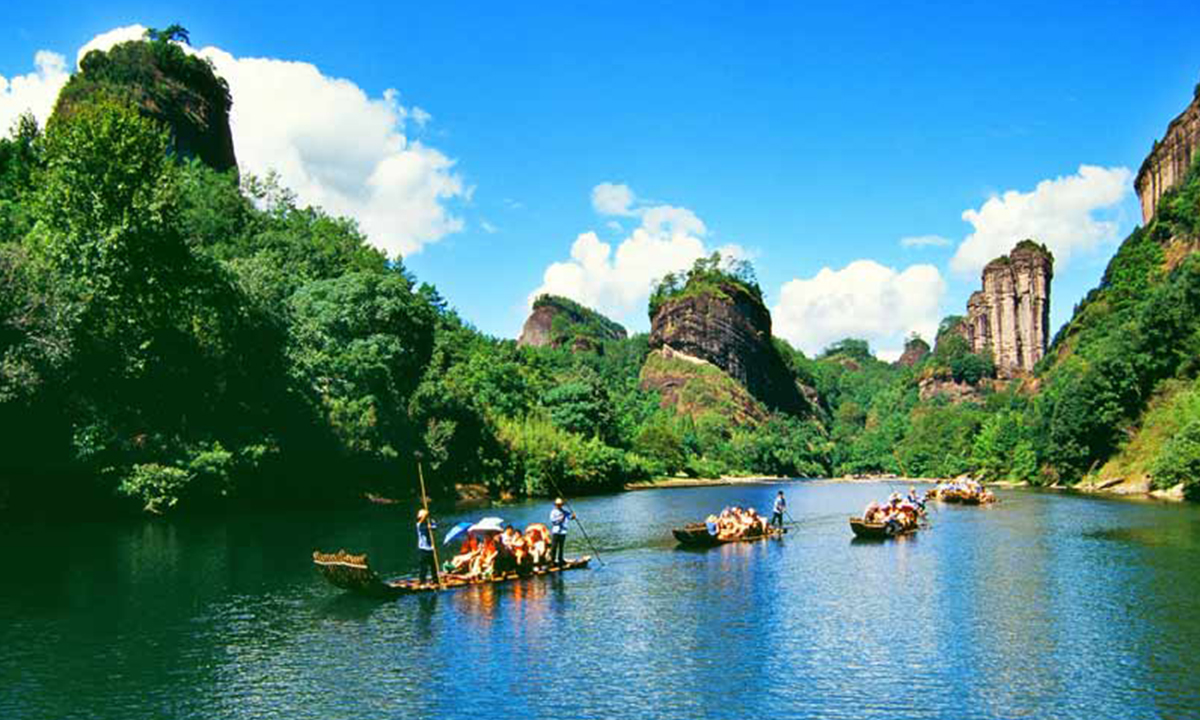 简体中文
TEL:+0086-599-5134010
简体中文
TEL:+0086-599-5134010
 简体中文
TEL:+0086-599-5134010
简体中文
TEL:+0086-599-5134010


The scenic area features good examples of “young” danxia landforms: the well-formed red peak forests, steep red cliffs, continual caves rarely-seen in China, the longest bedding cave of Wuyi Mountain, the concentrated honeycomb-shaped caves caused by the falling of gravels, the rolling cave collapse deposits, and elegant piles of stones. All unique danxia landforms are presented in this place, taking your breath away when you are here.
Wuyi Mountain National Park, located northwest of Fujian province, and covering a total area of 70 square kilometers, was one of the first group of national parks approved by the State Council. In December 1999, it was inscribed on the World Heritage List by the UNESCO.
Wuyi Mountain Scenic Area features low hills composed of red gravels. Generally, the peaks are about 400 meters high above sea level, and Sanyang Peak, the highest one, is at an elevation of 729.2 meters. The scenery is unique. For example, the crystal-clear Nine-bend River, the 36 towering peaks, and the 99 crags well complement each other and form a natural garden with magnificent and peculiar landscapes. The Nine-bend River boasts varieties of views. When rafting along the river, you can enjoy the ever-changing picturesque wonders on both banks, and this is regarded as the best part of the journey to Wuyi Mountain.
Wuyi Mountain also boasts a wealth of cultural landscapes and historical sites. The boat-shaped coffins in the caves, the wooden planks supporting the coffins, and the 480,000-square-meter Han-dynasty city site inhabited by the king of Minyue bear unique testimony to of the ancient civilization and cultural traditions and customs which has disappeared more than 3,000 years ago. The Cheng-Zhu School of Neo-Confucianism, started by Cheng Yi and Cheng Hao and developed by Zhu Xi, was the dominant philosophy from the Song to Qing dynasties in China. Representing the typical national traditions and spirits, it had exerted influence on countries in East Asia, Southeast Asia, Europe and America. Confucius absorbed the merits of previous ideological theories and founded Confucianism which had been the mainstream of traditional Chinese cultures. By incorporating the merits of ideological thoughts of Confucius and later generations, Zhu Xi pushed the neo-Confucianism to its heyday and injected new vitality into Confucianism, making it an outstanding representative of the School. Zhu Xi (1130-1200) is considered one of the most powerful figures in the history of Chinese culture and occupied an important position in the history of the Chinese culture, traditional ideology, education and rites. He was on a par with Confucius in cultural achievements.
The perfect combination of natural scenery and cultural landscape is a major characteristic of Wuyi Mountain Scenic Area. The Tianyou-Taoyuan Scenic Spot is particularly attractive and is a paragon of the harmony between man and nature. The peaceful environment and beautiful scenery had attracted numerous scholars to this place for sightseeing, secluding, writing and lecturing, leaving dozens of academies of classical learning, temple sites and over 100 cliffside carvings. The cultural landscapes scatter in the peaks, valleys, caves and cliffs, adding to the cultural value of the scenery. Here the natural scenery is well integrated with human ideology, feeling, wisdom and actions, mirroring the harmony between man and nature.